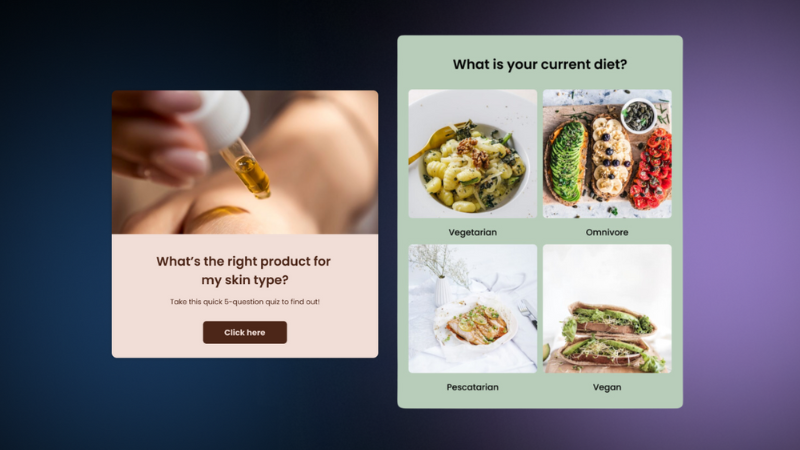Top 17 Digital Marketing Tactics to Fuel Business Growth
Businesses of all sizes need a marketing plan. Essentially, it’s a roadmap to success. It consists of strategies and marketing tactics that will keep all your business efforts focused on the goal you’ve set to achieve.

Many use “strategy” and “tactics” interchangeably, especially in marketing. Although the terms may seem synonymous, they refer to two different things. In business, companies leverage the marketing process to drive brand awareness and get products in front of their target audience. Strategy refers to the plan for achieving your goal. The tactics, on the other hand, are the actions you execute to support your strategy.
This guide delves into the latter. Here, we’ll cover everything from the digital marketing tactics definition to digital marketing tactics examples. We’ve made a list of the best actions to fuel your business growth in 2024.
What Are Digital Marketing Tactics?
When you’re creating a marketing plan, you start with broad strategies. Then, you support them with the right tactics.
Digital marketing tactics refer to a wide range of actions that brands use to reach a specific goal. In the digital era, you have a wealth of budget-friendly options to choose from. If, for example, you want to engage consumers, running quizzes or contests can help you achieve that goal. Let’s say you’re hoping to improve brand loyalty. You can offer consumers value through email campaigns, podcasts, or live interviews. You can promote user-generated content or start supporting a cause.
Since you have a myriad of options, you need to carefully select the right tactics that can support your strategy and lead you closer to your goal.
17 of the Best Digital Marketing Tactics
From running email campaigns to hosting live interviews, this digital marketing tactics list covers a wide range of methods that will help you expand your reach, gain new prospects, and maintain your existing customer base.
Here are 17 digital marketing tactics examples:
1. Improve brand awareness with quizzes
Quizzes aren’t only for fun and games. In fact, they can help marketers raise brand awareness. With the best quiz maker and a well-structured quiz, you can also turn prospects into social media followers. By integrating it with the rest of your digital strategy, you can gain a loyal audience.
Best practices to keep in mind when you make a quiz:
- Speak to your audience – Write directly to your prospects.
- Stick to a tone – Keep your brand’s personality and tone consistent.
- Avoid asking too many questions – You don’t want to bore your audience with a long quiz. Hence, stick to 6–15 questions per quiz.
- Add images – Make your quizzes more engaging by using images to complement your content.
Tips for writing your quiz results:
- Make the results personal – Again, write in second person to make the results seem more personal for your audience.
- Integrate social buttons – Sometimes, your audience will want to share their results. So, make it easier for them by adding social buttons.
- Add a call-to-action – Lastly, add a CTA button. If they’re pleased with their quiz results, they’ll want to learn more about them. They might even be interested in checking out more content or buying something.
Create Your Own Quiz in Minutes
Create a Quiz2. Build rapport with prospects through Email
Marketers have gained a wide array of tools over the years. Yet, email continues to be a fundamental tool for building relationships with consumers.
The content and messages delivered through email communication might have changed drastically. However, the practice is essentially the same. Nevertheless, many still struggle to do it effectively. There are different types of content you can send to your prospects to build rapport.

Types of emails:
- Welcome email – Make a good first impression by sending a welcome email to new subscribers. Offer something valuable upfront. Share your brand’s story. Furthermore, reassure them that the newsletter will benefit them greatly.
- Free offers – Next, share free resources or training offers, especially to new subscribers. This will help establish trust and rapport.
- Educational emails – You can also send content such as blog posts, infographics, and videos to your subscribers before publishing them on your website. This drives traffic to your site. Plus, it delivers incredible value to your subscribers.
- Exclusive content – Finally, treat your subscribers to exclusive content. You can, for example, send webinars or special discounts. This way, you can make them feel valued and appreciated. As a result, you can forge a relationship with consumers.
- Personalized emails – Personalized emails make people feel seen and respected and enable you to send more relevant content, which leads to better results. There are different tools you could use for email personalization. For example, you could run a lead quiz to segment your audience and send them an email sequence based on their answers. You could also use email marketing tools such as HubSpot or Mailchimp, which allow you to personalize your emails and make them stand out.
3. Use video clips & testimonials to boost conversions
Testimonials have always been valuable marketing assets for influencing the buying psychology of consumers. Whether B2B or B2C, you can always use testimonials to increase conversions. That’s because consumers rely heavily on social proof before making a purchase.
According to current marketing research, video testimonials have become powerful marketing tools used by more than 85% of businesses with an online presence. This is because these videos have proven to have a significant impact on buying decisions.
Video testimonials, even by unfamiliar people, can still increase conversions. In fact, around 91% of consumers trust online reviews as much as recommendations from personal contacts. Explainer videos, tutorials, and product videos get more engagement than written content. 60% of people will watch product videos if they encounter them, which means you’ll have more people aware of your business, solutions, and offers.
To make powerful, impactful video testimonials, you have to ask clients the right questions. Don’t focus on the product or service. Instead, concentrate on the value that they’ve delivered to the consumer. Potential buyers want to know the benefits they’ll receive from paying for a product or service. So, let them know how you can solve their pain points.
Examples of questions you can ask:
- What problems were you hoping to solve?
- How did you discover the company? And what made you choose it?
- What were the results you got after buying the product/service?
- What unexpected benefits did you receive?
- Why would you recommend the company to other customers?
Whether you’re going for a testimonial, an explainer, or both, these days you can easily use an online video editor to create great-looking video content that your audience will love. Videos can help you showcase your products/services and communicate with your audience in a creative and engaging way.
Implement your video strategically into your landing pages or create dedicated landing pages with your testimonials in mind. In other words, you shouldn’t just place testimonials on the lowermost part of your homepage because everyone else is doing it. Instead, implement video testimonials on the pages where you’re selling products or services. In doing so, you can build trust and motivate consumers to convert.
4. Leverage paid social media ads to increase reach
Paid search ads can drive immediate traffic to your website from a wider yet highly-targeted audience. They certainly require an investment. However, these ads can be cost-effective when prepared properly. Best of all, such ad campaigns can deliver an attractive return on investment.

The best social media platforms for paid ads:
- Facebook – Compared to other platforms, Facebook offers comprehensive targeting options. It lets you target audiences based on factors such as location, interest, job description, and various other criteria.
- Instagram – Instagram boasts one of the highest engagement rates among social media platforms, and is also the 4th most visited website globally. Make sure you have good captions and relevant hashtags to further increase audience engagement.
- Twitter – Run paid ads on Twitter to promote specific products and gain direct conversion. Brevity is important on this platform but so is interactive content. So, use compelling images, as well as CTAs, to complement your text.
- Pinterest – Ecommerce businesses can leverage Pinterest’s highly-targeted search engine to reach millennial women.
- LinkedIn – Its targeting options aren’t as advanced as Facebook. Nevertheless, they allow you to target prospects by company, company size, titles, education, and so on.
How to choose the right platform:
- Identify the platforms where your prospects are most concentrated
- Find out the platforms your prospects frequent
- Finally, determine the platforms where your prospects are actively engaging with paid ads the most
5. Gather customer feedback with surveys
Businesses can use surveys to optimize their products or services to suit the needs of consumers. In doing so, you can gain actionable insights for improving products and services. You can also learn how to serve your audience better. More importantly, you can use surveys to figure out how to stand out from a sea of competitors.
Certainly, you’ve got to ask the right questions to gain the right insights. And when you do, you can identify opportunities for improvement in your marketing strategy.
Best practices for writing marketing surveys:
- Keep the language clear and simple
Different people could have different understandings of certain concepts. Thus, avoid using complicated words with multiple meanings. Instead, use short, specific, and easy-to-understand language. - Avoid bias
“Did our support team solve your problem well?” Leading questions such as this subtly encourage people to answer surveys in a particular manner. In other words, they compromise survey results. You can avoid this by phrasing questions in a neutral manner. For example, “Did we solve your problem?” - Ask one thing per question
Don’t use double-barreled questions such as “How much fruit and vegetables do you eat per day?” It might be clear and simple, but it’s not the easiest to answer. What if someone eats fruits but not veggies every day? Conversely, what if your respondent eats veggies but not fruits every day?
Create Your Own Survey in Minutes
Create a Survey6. Elevate the brand with the help of advocates
Satisfied consumers, employees, and business partners can become your brand advocates. They can elevate your brand and fuel your company’s growth. Moreover, they can help you thrive in a highly-saturated marketplace. After all, they’re more than just loyal customers. They’re lifelong partners who are willing to share the values of your products and services.
How to build brand advocates:
- Deliver valuable, shareable stuff – Brand advocacy centers around sharing. Hence, offer prospects something valuable, fun, and engaging. For example, you could start a referral program with tools and offer customers a discount when they refer a friend. In return for their participation, they’ll show your brand a lot of love. When an employee or customer has a great experience with your brand, they’ll want to share their wonderful experience online.
- Share your vision – People want to feel like they’re part of something bigger. So, don’t be afraid to dream big. Hire people who not only understand but also share your passion. Together, you can create a roadmap to success.
- Be honest and transparent – Consumers value authenticity now more than ever. Brands that embody honesty and transparency have the most loyal advocates.
- Listen for cues that show what matters to them – Get to know your prospects. Pay attention to what they have to say, and engage them in conversation. This way, you can discover what they find valuable. And, you can work on offering that value.
7. Build consumer loyalty by giving back
Millennials are currently the largest consumer group. This generation values brands that give back to their communities. In fact, 70% of them are willing to make personal sacrifices to support the causes that matter to them.
Tips for using corporate social responsibility successfully:
- Partner with a non-profit group to support a cause that matters to you and your team
- Find a cause related to your brand and products
- Don’t just write a check and get it over with—donate products, dedicate your time and effort to support the cause
- Do joint promotions with the non-profit group of your choice
- Make a donation website to give your customers an easy way to contribute and show your commitment to the cause. If your campaign involves collecting donations or customer data, it’s important to understand ToS meaning and ensure your terms clearly explain how contributions are handled and how donor information is protected.
8. Generate buzz through podcasting
Podcasting is more popular now than it’s been at any point—and for good reason. When done right, your podcasts can generate some buzz for your business. Eventually, your efforts can help establish the company as an authority in your niche.

Make sure all these aspects are perfect:
- Sound quality
- Intro, outro, and segue music
- Editing
- Visual art
- Show notes
Tips for generating buzz with podcasts:
- Don’t be afraid to ask listeners to leave reviews and ratings
- Promote your podcast across different channels
- Improve your call-to-action to help your listeners understand the benefits of listening to the podcast
- Reach out and engage other influencers within your niche
9. Generate qualified leads with quizzes
Highly-engaging quizzes can generate more qualified leads than any static lead form in a website. As a matter of fact, quizzes can help you gather up to 500% more leads than a standard form.
Tips for creating highly-engaging quizzes that generate leads:
- Create a magnetic title that draws readers in
The title should be an enticing question that appeals to your audience. If you know who you’re writing it for, you can create an ideal quiz title that drives high-participation rates.
- Ask qualifying questions
So you can identify high-quality leads, ask a few questions that will help you pick out the respondents who can offer you the highest value.
- Gather your leads
Integrate a lead form in the quiz. You can ask for the respondents’ contact details right before you let them see their results. Given that the quiz is highly-engaging, you can expect to gather up to five times more leads than with a standard form.
- Add a compelling CTA
Along with the results of the quiz, add a powerful call-to-action. You can either integrate a CTA button or redirect participants to a landing page that’s customized based on their results.
Generate up to 500 Percent More Leads with a Lead Quiz
Create a Quiz10. Deliver useful information through infographics
Use infographics to deliver valuable information or data. Original visual content, such as infographics, are great for driving engagement.
Tips for making infographics:
- Develop your infographic for your target audience
When it comes to visual content, design isn’t just aesthetic. It drives value for the business. Hence, make your design coherent. Keep it specific and also relevant to your audience. - Simplify the information
Distill complex information into simple and concise content. - Keep the information focused
Don’t just add a string of random facts. Infographics must revolve around a single, focused topic.
11. Host live interviews to educate your audience
Businesses can leverage live streaming to deliver important information. For example, inviting a guest speaker like a professional figure in your niche or a customer can help your audience better understand what you can offer.
Tips for running successful live interviews:
- Get the word out before your broadcast
- Don’t ignore the audience; interact and engage with them
- Welcome feedback to further improve your live interviews
12. Set up a FAQ page
Frequently Asked Questions pages enhance the user experience. They enable visitors to find all the answers to their questions in a single place. Not only do FAQ pages make life easier for consumers but they also save your business valuable resources.
Furthermore, FAQ pages can enhance your SEO efforts. People often use long-tail keywords or full sentence questions when researching a brand. If their searches match the terms on your FAQ page, your website can rank organically on Google. In turn, you can drive organic traffic to your platform.
The FAQ page might not generate as much traffic as other SEO methods. However, it will drive a highly-targeted audience that’s interested in your brand.

Tips for creating SEO-friendly FAQ pages:
- Collect relevant FAQs
Find out what questions your website visitors frequently ask. So, work closely with your customer support team to obtain that information. - Put a little more thought into your FAQ navigational structure
Even if your content is well-written, it won’t be as effective without a navigational structure or system such as a search bar. By setting up a comprehensive FAQ section with categories and subcategories, users can easily find your content. - Link to other web pages
To make the FAQ section more manageable, you can list only the questions. Then, you can link them to other pages where the answers are. Driving traffic to other web pages will help Google understand how valuable your content is.
13. Promote user-generated content
User-generated content promotes authenticity as it comes from consumers themselves. By using UGC, you can improve credibility, increase trust, and gain brand advocates.
Tips for using UGC:
- Ask permission – Avoid potential copyright issues. So, always ask for their permission before using their work in your campaigns.
- Pick the right channels for UGC – Select the most effective social media networks for your UGC campaign.
- Spark brand desire – Make your brand appear more desirable in the eyes of consumers by sharing exceptional UGC.
- Inspire brand loyalty – Share content from long-time patrons to showcase ongoing loyalty.
14. Repurpose content to maximize your effort
Breathing new life into existing content has numerous advantages. For example, you can gain relevant materials which you can share on your online channels. You can also boost your SEO efforts and tap into a new audience.
Look at your site analytics to identify high-performing posts. Perhaps some facts have changed since you posted it. So, find out if you have something new to add. Then, don’t forget to optimize your content for the platform you’re going to publish it on.
Tips for repurposing content:
- Make podcasts from popular posts
- Spruce up and republish content for a different platform
- Turn stats and facts into infographics
- Convert video content into blog posts
- Turn your blog posts into a webinar
- Make an e-book or whitepaper from blog posts
15. Leverage interactive content to help solve customer pain points
Interactive content allows consumers to address problems and challenges in real-time. By integrating them into the website, you can help consumers identify their problems. More importantly, you can show them how your products or services can help solve the issues effectively.
Types of interactive content for solving customer pain points:
- Assessments
- Calculators
- Automated diagnostic tools
- Microsites
Opinion Stage is a platform you can leverage to develop interactive content such as assessments, stories, quizzes, and slideshows. They give you the option to design your content from scratch or choose from their rich selection of templates. With their help, you can drive more engagements and gain high-quality leads by giving consumers immediate solutions to their pain points.
16. Host contests to engage audiences
Online contests are an excellent way to gain low-cost marketing exposure. Who doesn’t love free stuff? Giving away freebies such as products, cash prizes, and other merchandise can help you increase audience engagement.
Tips for running a contest:
- Define your audience – Attract a highly-targeted audience that’s interested in purchasing your products; not just random contest entrants.
- Pick an ideal contest prize – Ideally, you should pick a prize that your audience finds valuable. At the same time, you should align it with the product or service you’re promoting.
- Select the right contest type – Next, make sure that the contest complements the offer and drives the most signups. Think of your audience for this step. Which social media platform are they most active on? What type of content do they find engaging?
- Set some guidelines – Social media networks regulate contests on their platform. Thus, establish clear guidelines for your audience.
- Strategize content distribution – Last but not least, maximize signups by promoting your contest across different social media platforms.
17. Boost Business Growth With Outreach Initiatives
Growing your business often means reaching out to new people who can help you grow. This might mean sending emails, using social media, or attending networking events. By using different outreach channels to connect with people, you can build relationships with potential customers, partners, and influencers.
LinkedIn is a great example of a platform where you can reach out to professionals in your industry and make valuable connections. You can use various tools to automate and streamline your LinkedIn outreach to grow your network and business more efficiently.
Create Quizzes, Surveys, and Polls
Start CreatingConclusion
Everyone wants to get ahead of the competition and stand out amidst the noise. Using the right marketing tactics effectively will help businesses achieve that.

As seen above, there are plenty of methods to fuel business growth. However, it’s not about integrating as many digital marketing tactics as you can. The key is in finding the right ones that you can execute effectively.

